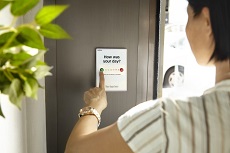
Customer feedback is a crucial part of product development. Involving customers in the development process can improve your chances of creating products to suit specific target markets. You may also better address their needs and preferences.
However, knowing the importance of customer feedback doesn’t mean you know how to use it to its full potential. You can find a few helpful tips below for when the time comes to start the product development process:
- Collect Feedback
Being able to use feedback effectively involves collecting it in the first place. Whether you’re thinking about launching Australian wine clubs or want to bring out a new subscription service, don’t be afraid to ask your current customer base for their thoughts and opinions.
You can explore multiple collection methods, such as customer interviews, social media, online reviews, surveys, and feedback forms. The more feedback you gather, the broader your understanding can be of the direction you’d like to take for your new products.
- Segment the Feedback
You’ll likely enjoy feedback from customers from all walks of life. They may live in different parts of the world, use your products in different ways, and have varying buying behaviors.
After gathering feedback, segment feedback based on demographics, patterns, and behaviors. This process lets you highlight specific needs and preferences that may help with product development. You may even find helpful information to make marketing your new products much easier.
- Rely On Data Analysis
Some businesses put the call out to thousands of customers, asking for feedback on new products. Sifting through large volumes of customer feedback can be a time-consuming process.
However, technology can be your best friend. You can use data analytics tools. Techniques like text mining and sentiment analysis may be valuable for highlighting the most actionable feedback and trends from your customers’ feedback.
- Highlight Critical Issues
You’ll likely receive a range of helpful comments from consumers during product development. It might even be overwhelming depending on how many customers you request feedback from.
However, you may be able to add a sense of order by highlighting the most critical issues first. These might be things that have the most impact, such as health and safety risks, quality issues, and manufacturing faults or errors. Once you have focused on those more pressing issues, you can turn your attention to less critical ones like aesthetics.
- Be Transparent
Providing feedback as a customer can be time-consuming. Not knowing how valuable or important it is, you may not get the number of responses you were expecting. That’s why transparency when collecting feedback for product development can be crucial. Customers may be more likely to provide their opinions when they learn that their feedback could be used in product development.
Alongside being able to iron out kinks in a product, you may also build trust with consumers simultaneously.
- Implement it in Product Testing
Product testing is a natural next step after receiving customer feedback. You can now make recommended changes and deliver a new product to your test market for more feedback. Be sure to ask for more input on a new or improved product’s usability, functionality, and user experience.
This can encourage a continuous feedback loop. You can make improvements, seek feedback, and make further improvements. Finally, you’ll be able to release a wonderful product onto the market.
Customer feedback can be invaluable in product development. Still, not all business owners are using it to its full potential. Start collecting and segmenting user data now and enjoy being able to craft a product that you now have proof your customers will enjoy.






